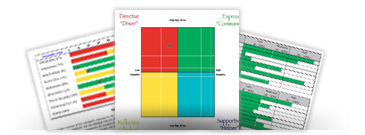5 Must-Have Features for a Great Sales Presentation
A great sales presentation can make a hesitant prospect turn into an all-in, repeat customer. It can make people believe in products, be inspired by them and to commit the cash to buy them. The magic is in the delicate art of persuasion. Everything from the seller,the message, and the props, determines whether a presentation is great, mediocre or a downright failure.
If you’re struggling to get positive responses and closes with your pitch, consider upgrading by including the following features:
1. Narratives
Modern prospects are often desensitized to hard-core pitches, but very receptive to the journey and climax of a story. A salesperson must be a storyteller, using real life scenarios of people in the same situations as prospects to relay how products and services were able to change or improve real lives. This is something that, if narratives are believable and authentic, can resonate with customers and allow them to experience product benefits vicariously as they consider buying.
Another tactic is for the seller to put the current prospect in the narrative, allowing him to imagine a future with the product or service. This works best when the salesperson has already struck up a conversation where the customer reveals needs and desires, which can be integrated into the spontaneous story. The story should be inspiring.
2. Multiple types of media
The best sales presentations have more than talk. They stimulate with slideshows or video as well as text in the form of brochures or handouts, which are still an excellent leave-behind for customers. Some companies create DVDs that can be passed out and kept by prospects.
Beyond that, include any object that can be temporarily passed around and inspected by the audience, such as a product sample, since props add drama to a presentation.
3. Give the customer top billing over the company
No matter what media accompanies the presentation, make sure that it and you go beyond droning on and on about the brand, its achievements and superiority. Make the customer’s needs the primary consideration. Word the sales media and the presentation in such a way that customer issues and longings are the centerpiece. Don’t mention the brand until you can tie it to a customer’s issue. Also, in keeping with the customer focus, be willing to pause at every step to get feedback and take questions so that there is a constant dialogue.
4. Upbeat and engaging tone
The personality of the salesperson is a strongly persuasive factor for the customer. Customers want to feel that the seller is personable, understanding, willing to help them and on their side. They want to feel excited about a product; the excitement of a salesperson can be contagious. Customers that are emotionally invested tend to buy. Avoid being rushed, overly authoritative or condescending.
5. A Refined Core Message
No matter how many talking points a seller has or how many stories or answers he provides for the customer, there should be a central message that is repeated and driven home in every phase of the presentation. That message should be irresistible, clear, short and memorable to the customer – like a catchy song chorus that can’t be resisted.
Making sure the script for your next sales presentation includes these elements can increase your sales success.



